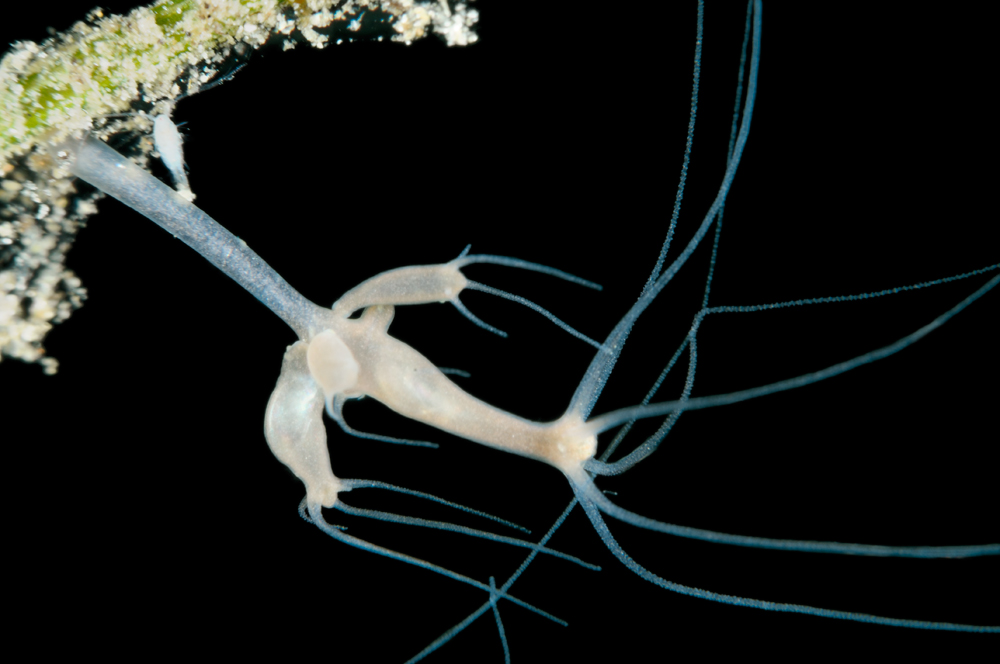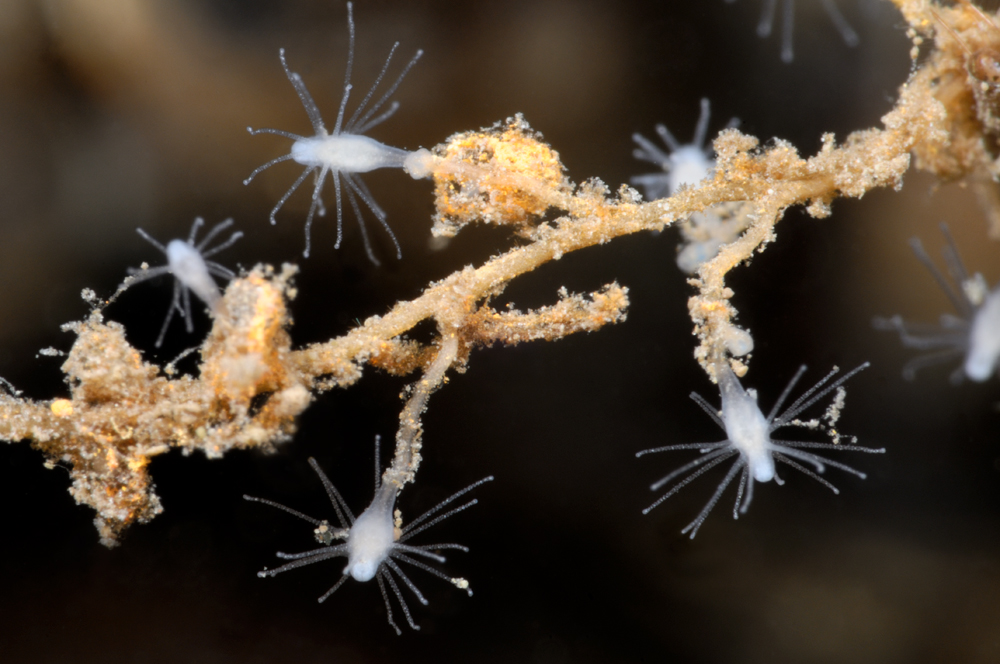

Ze zijn er weer. De zomer loopt bijna ten einde en dan is de tijd gekomen voor de zoetwaterkwalletjes. De zoetwaterkwal is een neteldier, in het zoete water komen die niet zo heel veel voor. Naast het zoetwaterkwalletje hebben we nog de hydra’s en de brakwaterpoliep. De naam neteldier zegt het al, ze kunnen steken.
Gelukkig zijn de netelcellen van deze drie dieren te zwak om voor mensen gevaarlijk te zijn maar kleine beestjes moeten uitkijken. Alle drie hebben ze tentakels waarmee de prooi gevangen wordt en met de netelcellen wordt de prooi verdoofd. De kwalletjes vallen voor de meeste duikers wel op maar de hydra is een heel stuk kleiner en zit meestal vast op een of ander substraat. Dat kunnen waterplanten of stenen zijn.
Ze zijn het hele jaar te vinden maar in het vroege voorjaar kunnen ze bijzonder talrijk zijn en bovendien erg groot. Meestal zijn ze wit of roze. Het lichaam is cylindrisch met 6 zeer lange tentakels. In de Boschmolenplas zitten ze dan met zeer velen op de planten. Het kunnen er zoveel zijn dat de duiker die een klein beetje oplet ze niet over het hoofd kan zien. De brakwaterpoliep is een exoot uit het Ponto Caspische gebied. Het zijn hele kleine min of meer bolvormige poliepjes met tentakeltjes. Een poliepje is heel klein maar ze vormen kolonies waardoor een bosje poliepen ontstaat. Hierdoor zijn ze beter te vinden voor een duiker. De brakwaterpoliep heeft een heel klein beetje zout in het water nodig om te kunnen groeien. Omdat de Grote Hegge en de Polderplas in verbinding staat met de Maas kunnen deze poliepen hier groeien. Er zit een heel klein beetje zout in Maaswater. De Boschmolenplas staat niet in verbinding met de Maas en wordt gevoed door bronnen. Er zit geen zout in. De brakwaterpoliepen zul je in de Boschmolenplas dan ook niet vinden.

Tekst en foto’s Silvia Waajen
Here they are again. Summer is slowly ending and this is the time Fresh water jelly fish appear. The Fresh water jelly fish is a cnidarian and these species are rare in fresh water. Besides the Fresh water jelly fish there is the Hydra and the Fresh water hydroid. The name Cnidarian says it all, they sting. Fortunately the stinging cells of these three animals are to weak to harm people but small animals have to be careful. All three they have tentacles for catching prey that will be paralyzed by the stinging cells. The Fresh water jelly fish will most likely be noticed by divers but the Hydra’s are a lot smaller and sessile. Often on plants or stones. Hydra’s can be found whole year around but in early spring they are very common and also very big. Mostly they are white or pink. The body is cylindrical with 6 very long tentacles.
Around this time there are huge numbers of them on waterplants in the Boschmolenplas. They can be so abundant that it’s hard to overlook them. The Fresh water hydroid is an invader from the Ponto Caspian region. They are very small with more or les round shaped polyps with short tentacles. One polyp is very small but these animals form colonies with lots of polyps. This is why they will be easier found by divers. The Fresh water hydroid needs a little bit of salt in the water to grow. The Fresh water polyp grows in the Grote Hegge and Polderplas because they have a connection to the Maas. There is a little bit of salt in the water. The Boschmolenplas doesn’t have a connection to the Maas, she is fed by springs. There is no salt in it. This is why the Fresh water hydroid isn’t found in the Boschmolenplas.
Zorgeloos duiken en snorkelen begint bij Scuba Adventures Europe. Wij helpen jou de onderwaterwereld te ontdekken met een duikuitrusting die naadloos aansluit op jouw wensen en behoeften.
In onze online en offline duikwinkels vind je als duiker alle benodigdheden om van iedere duik een onvergetelijke ervaring te maken.